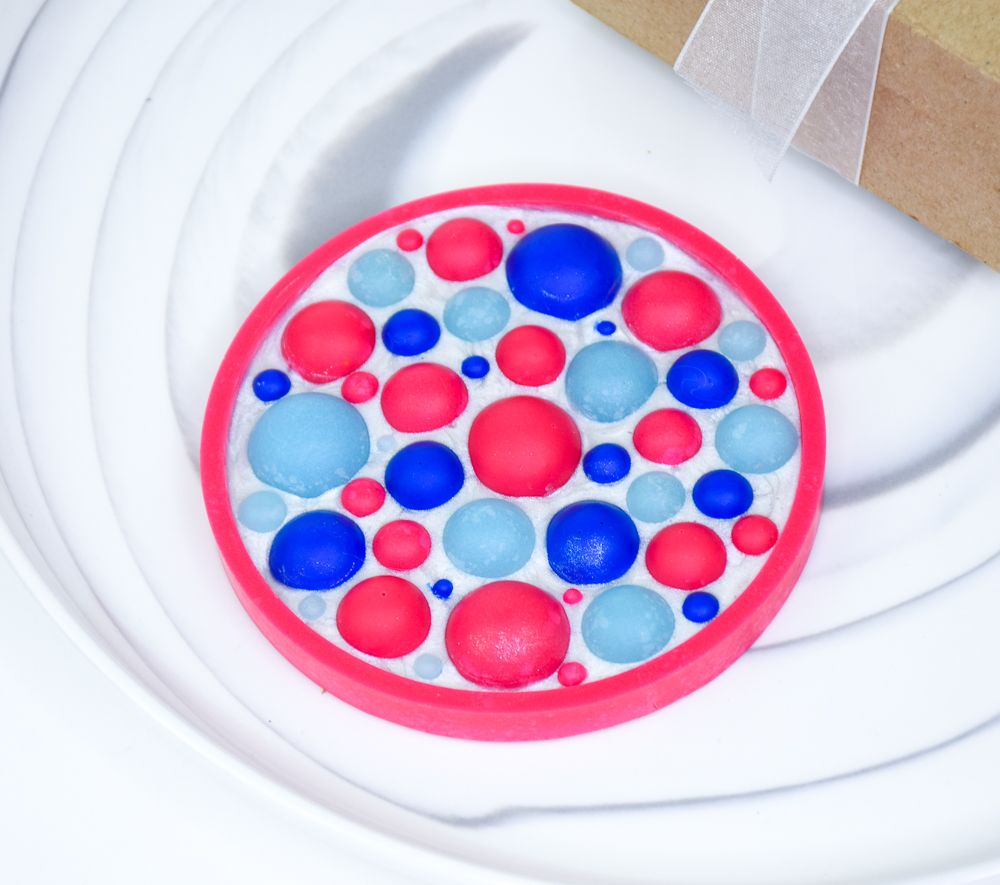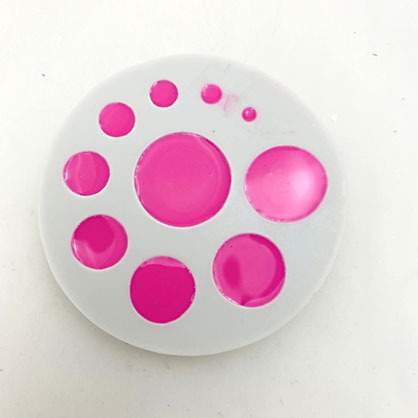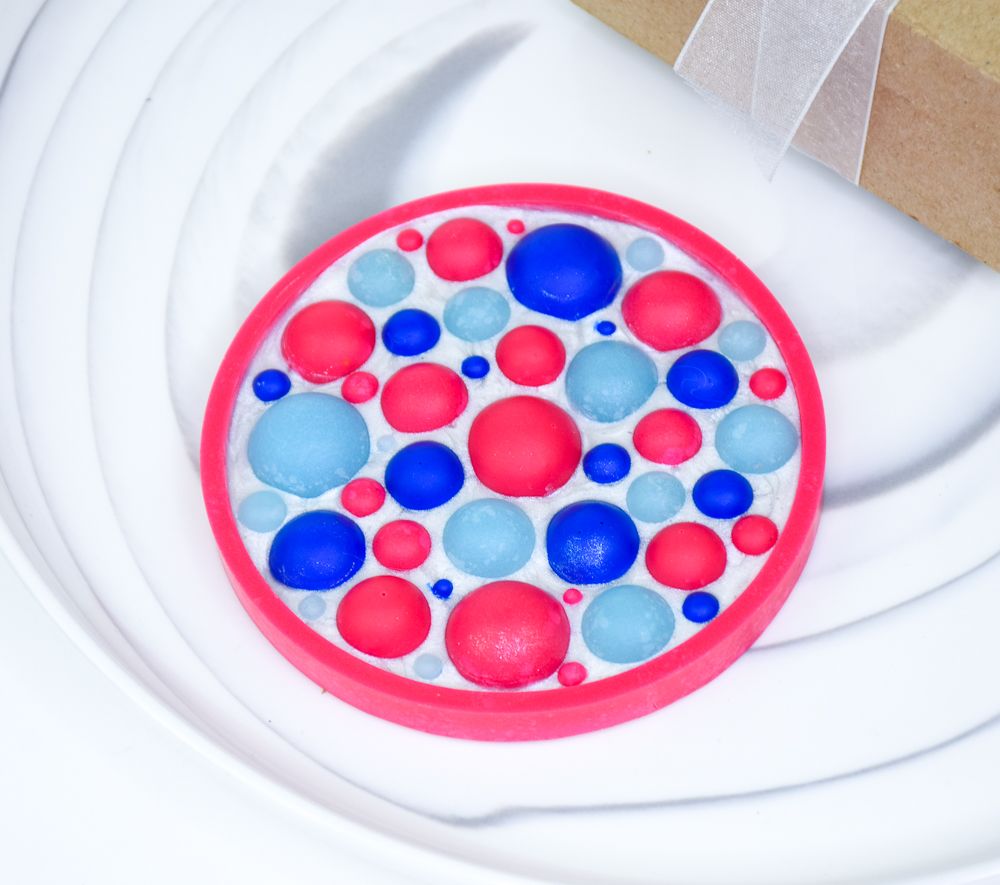Liquid Sculpey® Cabochon Coaster
Liquid Sculpey® Cabochon Coaster
Designed by Amy Koranek
Read More
Read Less
Add a burst of color to your living room with these great coasters or give them as a hostess gift at the next dinner party!TIME TO COMPLETE: 2 Hours to make and bake (bakes several times)
ADDITIONAL SUPPLIES
- Paper towel
- 4” Round silicone coaster mold
- Multi sized silicone cabochon mold
- Small sharp scissors

Project Instructions
Step 1
- Getting Started with Liquid Sculpey®:
-
Baking:
- It is important to use oven thermometer when you bake the liquids so that you can ensure your oven is at the correct temperature.
- Do not microwave the liquids. They must be baked in a Preheated oven at 275 ºF (130 ºC) for liquid colors and 300 ºF (149 ºC) for Clear – Do not exceed baking temperatures.
- If your piece is less than 1/4” bake for 15 minutes. For thicker pieces that are 1/4” or above bake for 30 minutes.
- If your liquid project has become yellowed or discolored in the oven, when you remake it, tent it by placing either – folding an index card in half and placing your project under it by using aluminum foil over your project.
Here’s a tip for baking perfectly in silicone molds. Dampen a dish towel with water and wring out as much of the water as you can. Fold the damp towel so that the molds can sit level on top of it. The damp towel will slow down the curing process so that the LS will cure evenly throughout and avoid warping.
Step 2
Fill the rim of the coaster mold to level at the point where the rim meets the flat surface with Fuchsia Liquid Sculpey® (LS).Tap the mold on the work surface to release air bubbles.

Step 3
To make sure the corner edges of the rim are bubble free, I like to insert the Needle Tool and run it around both the inside edge and the outside edge.Clean the Needle Tool with paper towel.
Tap the mold on the work surface to release air bubbles.

Step 4
Add a pool of Pearl LS to the center of the coaster mold just to the point where it touches the Fuchsia LS. It’s okay if the two colors blur a bit where they meet because this is the bottom of the coaster.Designer’s Note – There is a great tip for baking with LS in molds in Step 1 above!
Bake the coaster mold following the baking instructions for Liquid Sculpey®.
Allow to cool completely before flexing the mold to release the baked coaster.

Step 5
Fill the Cabochon mold completely with Fuchsia LS.Tap the mold on the work surface to release air bubbles.
Bake the mold following the baking instructions for Liquid Sculpey®. You can bake this at the same time as the coaster if desired.

Step 6
Allow the mold to cool completely before flexing to remove the baked pieces.Repeat Steps 5-6 by filling the Cabochon mold with Blue LS and baking.
Repeat Steps 5-6 by filling the Cabochon mold with Translucent Turquoise LS and baking.
You may wish to repeat these steps again with all the bright colors so that you have lots of baked cabochons to fill the coaster with.

Step 7
After removing the coaster from the mold, you may notice rough edges of baked LS along the edge. Carefully trim these away with sharp scissors.
Step 8
Lay the baked coaster right side up on the work surface.Add a thin layer of Pearl LS to the top side of the coaster center.
Feel free to move the Pearl LS with your fingertips all the way to the rim.

Step 9
Add the largest baked cabochons to the design first.
Step 10
My largest cabochons were much thicker than my smaller ones. I baked my coaster at this point to cure the first level so that I could add more Pearl LS to hold the smaller cabochons up level with the larger ones.Allow the coaster to cool completely after each baking.

Step 11
Add more Pearl LS to the background between the larger cabochons.Add the smaller baked cabochons to the areas in between the larger cabochons.

Step 12
Bake again following the baking instructions for Liquid Sculpey® and allow to cool completely before handling.

